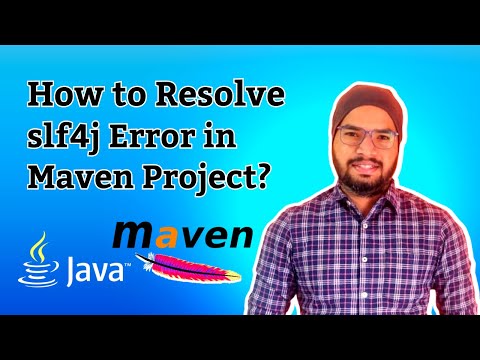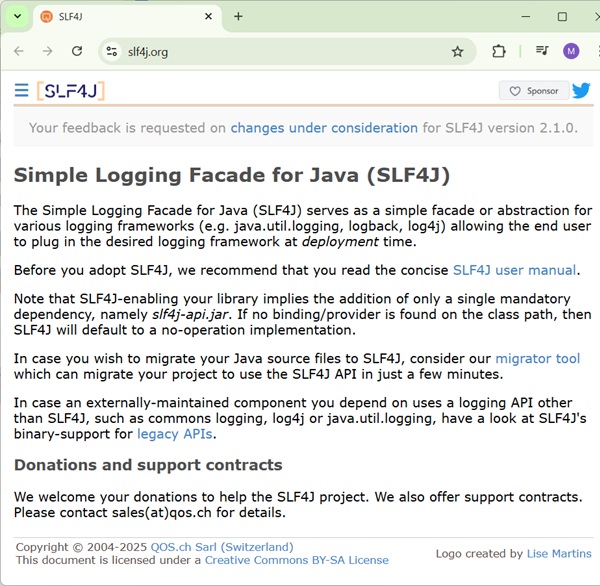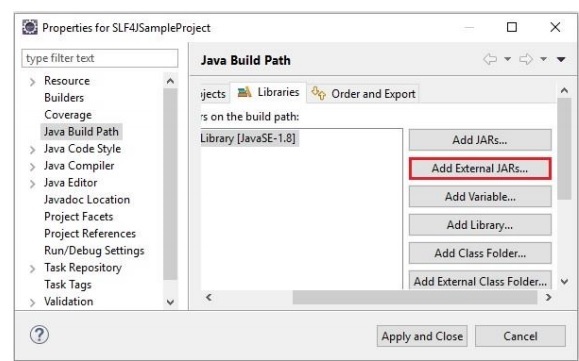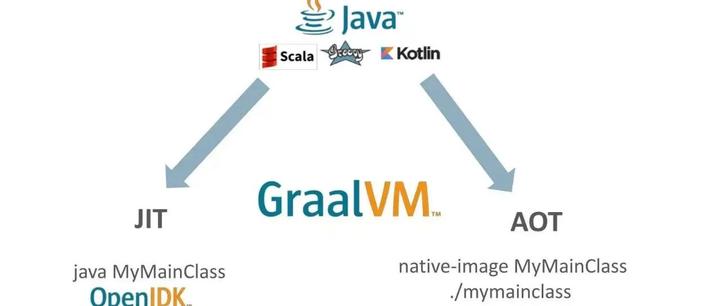No Slf4J Providers Were Found.
Background of SLF4J and its Purpose
Logging is an essential aspect of software development, allowing developers to track and debug their applications. In Java, the Simple Logging Facade for Java (SLF4J) serves as a logging framework, providing a simple and flexible logging API for various logging frameworks. SLF4J acts as a mediator between an application and the underlying logging implementation, allowing developers to switch logging frameworks seamlessly.
The primary purpose of SLF4J is to provide a uniform and consistent logging interface across different logging frameworks, such as Logback, Log4j, and Java Util Logging (JUL). By using SLF4J, developers can write log statements without having to worry about the specific logging implementation being used. This allows for greater flexibility, maintainability, and portability of code.
Overview of Logging in Java
Logging in Java involves capturing and storing event information during the execution of an application. These events can range from simple informational messages to warnings and critical error logs. The captured logs provide insights into the behavior of the application, helping developers identify and fix issues.
In Java, several logging frameworks are available, each with its own features and advantages. Some common logging frameworks include Log4j, JUL, and Logback. These frameworks provide various functionalities and configurations to suit different logging needs.
What is SLF4J and Why is it Important?
SLF4J acts as a facade or wrapper around different logging frameworks, allowing developers to switch between implementations without modifying their code. It provides a common set of logging interfaces that can be implemented by different logging frameworks. With SLF4J, developers can write log statements using a simple and consistent API, regardless of the underlying logging framework being used.
The importance of SLF4J lies in its ability to decouple the application code from the logging implementation. This decoupling provides flexibility and ease of maintenance. If a different logging framework needs to be used, developers can simply switch the SLF4J binding without changing their log statements.
Possible Causes for “No SLF4J Providers Found” Error
When working with SLF4J, it is possible to encounter an error message stating “No SLF4J providers found.” This error typically occurs due to one or more of the following causes:
1. Missing SLF4J dependency: The application’s classpath may not include the necessary SLF4J binding or implementation. SLF4J requires a binding, such as slf4j-log4j12 or slf4j-simple, to bridge the API calls to an actual logging framework.
2. Version mismatch: The version of the SLF4J API being used may not match the version of the SLF4J binding. It is essential to ensure that the versions of the API and the binding are compatible.
3. Incorrect configuration: The SLF4J configuration file may be missing or misconfigured. SLF4J requires a configuration file, such as logback.xml or log4j.properties, to specify the desired logging level and other settings.
How to Resolve the “No SLF4J Providers Found” Error
To resolve the “No SLF4J providers found” error, follow these steps:
1. Check SLF4J dependencies: Ensure that the necessary SLF4J dependencies are included in the project’s build file (e.g., Maven or Gradle). Make sure to include the SLF4J API and a compatible binding, such as slf4j-log4j12 or slf4j-simple.
2. Verify classpath: Confirm that the classpath contains the correct SLF4J bindings targeting slf4j-api versions 1.7.x or earlier. This ensures compatibility between the API and the binding.
3. Update SLF4J versions: If there is a version mismatch between the SLF4J API and the binding, update either the API or the binding to ensure compatibility. It is recommended to use the latest versions whenever possible.
4. Configure the logging framework: Ensure that the SLF4J configuration file is present and correctly configured. The configuration file specifies the desired logging level, appenders, and other settings. Refer to the documentation of the specific logging framework being used (e.g., Logback or Log4j) for detailed configuration instructions.
Step-by-Step Guide to Adding SLF4J Providers
To add SLF4J providers, follow these steps:
1. Determine the desired logging framework: Choose the logging framework that best suits your requirements. Popular choices include Logback, Log4j, and JUL.
2. Add the SLF4J dependencies: Include the SLF4J API and a compatible binding as dependencies in your project’s build file. For Maven, add the following dependencies to the pom.xml file:
“`
“`
3. Configure the chosen logging framework: Depending on the logging framework, follow the corresponding configuration steps. For example, if using Logback, create a logback.xml file in the appropriate location and configure the desired appenders, loggers, and log levels.
Common Mistakes to Avoid when Configuring SLF4J Providers
When configuring SLF4J providers, some common mistakes to avoid include:
1. Incorrect dependency versions: Ensure that the versions of the SLF4J API, binding, and the chosen logging framework are compatible. Mismatched versions can lead to errors and unexpected behavior.
2. Missing or misconfigured configuration files: Double-check that the SLF4J configuration file (e.g., logback.xml) is present and correctly configured. Ensure that the file is in the right location and specifies the desired logging settings.
3. Conflicting logging dependencies: Avoid including multiple logging frameworks and bindings in the project simultaneously. Conflicts can arise when different logging frameworks handle the same logging calls, leading to erratic behavior and errors.
Conclusion
Logging is an essential aspect of software development, and SLF4J provides a seamless and flexible approach to logging in Java applications. By decoupling the application code from the underlying logging implementation, SLF4J allows for greater maintainability and portability.
However, encountering the “No SLF4J providers found” error can be frustrating. By following the steps outlined in this article, you can resolve this error successfully. Remember to ensure that the necessary SLF4J dependencies are included, check for version compatibility, and configure the logging framework correctly.
In summary, SLF4J simplifies logging in Java and allows developers to focus on the core functionality of their applications, while still having the flexibility to switch logging frameworks if needed. By understanding the common causes of the “No SLF4J providers found” error and following the provided solutions, you can overcome this error and continue logging with ease.
FAQs
Q: What is the purpose of SLF4J?
A: SLF4J serves as a logging facade for Java applications, providing a simple and consistent logging API across different logging frameworks.
Q: Why am I getting the “No SLF4J providers found” error?
A: This error typically occurs due to missing SLF4J dependencies, version mismatch between the API and the binding, or incorrect configuration of the logging framework.
Q: How can I resolve the “No SLF4J providers found” error?
A: To resolve the error, ensure that the necessary SLF4J dependencies are included, check for version compatibility, and properly configure the logging framework.
Q: What are some common mistakes to avoid when configuring SLF4J providers?
A: Common mistakes include using incompatible dependency versions, missing or misconfigured configuration files, and conflicting logging dependencies.
Q: Why is SLF4J important for logging in Java?
A: SLF4J decouples the application code from the logging implementation, providing flexibility, maintainability, and portability. Developers can write log statements using a unified API, regardless of the underlying logging framework being used.
Q: Can I switch between logging frameworks without modifying my code using SLF4J?
A: Yes, SLF4J allows developers to switch the logging framework by changing the SLF4J binding without modifying their log statements. This decoupling makes it easier to adapt to changing logging requirements or preferences.
How To Resolve Slf4J Error In Maven Project | Failed To Load Class Org.Slf4J.Impl.Staticloggerbinder
What Is An Slf4J Provider?
When it comes to logging frameworks in Java, SLF4J (Simple Logging Facade for Java) is a widely adopted standard. SLF4J abstracts the underlying logging framework and provides a simple and intuitive API for developers to log messages in their applications. However, SLF4J does not provide the actual implementation for logging; it merely acts as a facade. This is where an SLF4J provider comes into play.
An SLF4J provider is a concrete implementation of the logging framework that SLF4J binds to at runtime. It serves as the bridge between the SLF4J API and the actual logging framework in use. By utilizing an SLF4J provider, developers can take full advantage of the SLF4J API while seamlessly using the logging framework they prefer.
SLF4J currently supports various logging frameworks as providers, including logback, java.util.logging, and log4j, enabling developers to choose the one that best suits their needs and preferences. Each provider offers its unique features and configuration options while adhering to the SLF4J API specifications.
How does an SLF4J Provider Work?
To understand how an SLF4J provider works, let’s take an example of using logback as a provider. Logback is an open-source logging framework that fully implements the SLF4J API. When an application uses the SLF4J API to log messages, the actual logging calls are delegated to the logback implementation through the SLF4J provider.
The SLF4J provider binds with logback, and any log statements made using SLF4J are passed to logback for processing. This way, the developer can utilize all the powerful features logback offers, such as advanced logging configurations, filtering, and custom appenders, without having to directly interact with logback’s API.
One of the main advantages of using an SLF4J provider is the ability to switch logging frameworks easily. If an application initially used log4j as the logging framework, but later decided to migrate to logback, all that is required is replacing the SLF4J provider with the logback version. The rest of the codebase, using the SLF4J API for logging, remains unchanged, minimizing the effort required during the migration process.
Frequently Asked Questions
Q1: Is SLF4J just another logging framework?
A1: No, SLF4J is not a logging framework itself but rather a facade that provides a unified API for logging frameworks. It allows developers to write log statements in a consistent manner, regardless of the underlying logging framework.
Q2: Why should I use an SLF4J provider instead of directly interacting with a logging framework?
A2: Using an SLF4J provider offers several benefits. It allows you to switch logging frameworks effortlessly without changing your codebase, provides a standardized API for logging, and reduces your code’s dependency on a specific logging implementation.
Q3: Can I use multiple SLF4J providers in my application?
A3: No, only one SLF4J provider can be active at a time. However, you can configure your application to use a different provider if needed.
Q4: Do I need to add an SLF4J provider explicitly to my project?
A4: Yes, to use SLF4J, you need to include the SLF4J API dependency in your project’s build file, along with the desired SLF4J provider of your choice.
Q5: How do I choose the right SLF4J provider for my application?
A5: The choice of SLF4J provider depends on your specific requirements and preferences. Consider factors such as performance, features, compatibility, and community support to make an informed decision.
Q6: Can I configure the logging format and behavior using SLF4J?
A6: No, SLF4J does not provide configuration options for logging itself. Configuration is handled by the chosen logging framework’s implementation, such as logback or log4j.
Q7: Are SLF4J providers limited to Java applications?
A7: While SLF4J is primarily used in Java applications, there are bindings available for other programming languages, such as C++, .NET, and Python, facilitating cross-language compatibility.
Q8: Can I use SLF4J in conjunction with other logging frameworks?
A8: Yes, SLF4J provides abstractions to allow integration with other logging frameworks. This can be achieved through bridge modules, enabling seamless interoperability between different logging frameworks.
In conclusion, an SLF4J provider acts as a bridge between the SLF4J API and a concrete logging framework, enabling developers to use SLF4J’s logging capabilities while utilizing their preferred logging implementation. By leveraging an SLF4J provider, developers gain flexibility, maintainability, and the ability to switch logging frameworks effortlessly. Understanding the role of an SLF4J provider is crucial for effectively utilizing SLF4J’s logging capabilities and building robust Java applications.
How To Install Slf4J In Eclipse?
SLF4J, short for Simple Logging Facade for Java, is a logging framework that provides a simple and generic logging interface for various logging systems. It allows developers to switch between logging frameworks easily, without modifying their code. If you are using Eclipse as your Java Integrated Development Environment (IDE), this article will guide you through the process of installing SLF4J in Eclipse.
Before we proceed with the installation, ensure that you have Eclipse IDE installed on your system. If not, you can download it from the official Eclipse website and set it up according to your operating system.
Now, let’s get started with the installation process:
Step 1: Download the SLF4J Library
To install SLF4J in Eclipse, you first need to obtain the necessary libraries. Visit the official SLF4J website at http://www.slf4j.org and navigate to the “Downloads” page. Look for the latest stable version of SLF4J and download the desired distribution package. The most common choice is the “slf4j-x.x.x.tar.gz” file, where “x.x.x” represents the version number.
Step 2: Extract the Library Files
After downloading the SLF4J package, extract its contents to a suitable location on your system. You can use an archiving tool like 7-Zip or WinRAR to extract the files. Once the extraction is complete, navigate to the directory where the files are located.
Step 3: Configure the Eclipse Project
Open your Eclipse IDE and select the Java project where you want to install SLF4J. Right-click on the project folder in the “Package Explorer” and go to the “Build Path” option. From the dropdown menu, select “Configure Build Path.”
In the “Configure Build Path” window, click on the “Libraries” tab. Then, click on the “Add External JARs” button. Browse to the location where you extracted the SLF4J libraries and select the “slf4j-api-x.x.x.jar” file. Finally, click “Apply and Close” to save the changes.
Step 4: Add Logging Implementations
SLF4J acts as a facade for various logging frameworks, meaning that you still need to choose and add an actual logging implementation library. SLF4J is compatible with popular logging frameworks like Logback, Log4j, and java.util.logging.
To integrate a logging framework with SLF4J, you need to add the respective logging library to your Eclipse project. For example, if you want to use Logback, download the Logback library from its official website and follow a similar process as in Step 3 to add it to your Eclipse project’s build path.
Step 5: Test the Installation
To ensure that SLF4J is properly installed and functioning, create a simple Java class with some logging statements. For example, create a class named “SLF4JTest” and add the following code:
“`java
import org.slf4j.Logger;
import org.slf4j.LoggerFactory;
public class SLF4JTest {
private static final Logger logger = LoggerFactory.getLogger(SLF4JTest.class);
public static void main(String[] args) {
logger.info(“SLF4J installation test.”);
}
}
“`
If there are no errors in the console and you see the log line printed, congratulations! You have successfully installed SLF4J in your Eclipse environment.
FAQs
Q1: What is the purpose of SLF4J?
A1: SLF4J serves as a logging facade for Java applications, allowing developers to switch between various logging frameworks easily without changing their code.
Q2: Can I use SLF4J with other IDEs besides Eclipse?
A2: Yes. SLF4J can be used with any Java IDE, including IntelliJ IDEA and NetBeans.
Q3: Is SLF4J compatible with log4j 2?
A3: Yes, SLF4J works seamlessly with log4j 2. You can easily configure SLF4J to use log4j 2 as the underlying logging implementation.
Q4: Do I need to remove any existing logging libraries before installing SLF4J?
A4: No, SLF4J can coexist with other logging libraries. It provides a unified logging interface while redirecting logging requests to the chosen implementation.
Q5: Can I configure SLF4J to write logs to a file?
A5: SLF4J itself does not provide a file appender. You need to configure the chosen logging implementation (e.g., Logback or Log4j) for file-based logging.
In conclusion, installing SLF4J in Eclipse allows developers to achieve flexible and consistent logging across their Java projects. By following the step-by-step instructions outlined in this article, you can easily incorporate SLF4J into your Eclipse environment and start utilizing its benefits.
Keywords searched by users: no slf4j providers were found. class path contains slf4j bindings targeting slf4j-api versions 1.7.x or earlier., slf4j: defaulting to no-operation (nop) logger implementation, slf4j-api maven, slf4j-log4j12, slf4j-simple, Slf4j maven, Org/slf4j/LoggerFactory, Slf4j gradle
Categories: Top 48 No Slf4J Providers Were Found.
See more here: nhanvietluanvan.com
Class Path Contains Slf4J Bindings Targeting Slf4J-Api Versions 1.7.X Or Earlier.
Introduction:
When working with Java applications, logging plays a crucial role in gathering information and diagnosing issues. SLF4J (Simple Logging Facade for Java) is a commonly used logging framework that provides a simple and unified API for various logging frameworks such as log4j, java.util.logging, and others. This article focuses on understanding the class path that contains SLF4J bindings targeting SLF4J API versions 1.7.x or earlier.
Understanding SLF4J Bindings:
In SLF4J, bindings refer to the actual implementation of the logging framework used behind the facade API. These bindings translate logging statements in the SLF4J API to the corresponding statements in the underlying logging framework.
SLF4J API versions 1.7.x and earlier introduced the ability to load multiple bindings simultaneously. The class path, a list of directories and JAR files that Java searches for class files, can contain multiple SLF4J bindings targeting different logging frameworks.
When the class path contains multiple bindings for SLF4J, the implementation is set to use the first one it encounters. This means that only one binding will be active at runtime, even though multiple bindings are present in the class path.
Importance of Targeting SLF4J API Versions 1.7.x or Earlier:
By targeting SLF4J API versions 1.7.x or earlier, developers ensure compatibility with applications, libraries, and frameworks that rely on SLF4J 1.7.x release series. Many widely used libraries have not migrated to the latest SLF4J API versions, making it essential to have the appropriate bindings in the class path.
Handling SLF4J Binding Conflicts:
When dealing with multiple SLF4J bindings in the class path, it is crucial to avoid conflicts. This can be achieved by:
1. Analyzing the class path: Check the class path to identify the presence of different SLF4J bindings and their versions. Tools like Maven’s dependency tree or the command ‘mvn dependency:tree’ can be useful for this analysis.
2. Exclusion or relocation: If conflicts are detected, it is necessary to exclude or relocate the incorrect binding from the class path. This can be done by modifying the dependencies in a build system like Maven or Gradle. Excluding or relocating the conflicting binding ensures that only the required binding remains in the class path.
FAQs:
Q1. What happens if conflicting SLF4J bindings are present in the class path?
If conflicting SLF4J bindings are present, only one binding will be active at runtime, and the selection is based on the first encountered binding. This can lead to unexpected logging behavior, as different frameworks may produce conflicting log outputs.
Q2. How can I exclude a specific binding from the class path using Maven?
To exclude a specific SLF4J binding from the class path using Maven, add an exclusion entry for the unwanted binding in the relevant dependency declaration. For example:
“`xml
“`
Q3. Can I use multiple SLF4J bindings simultaneously?
Although the class path can contain multiple SLF4J bindings simultaneously, only one binding will be active at runtime. It is important to ensure that the desired binding is the first encountered by the class loader.
Q4. How can I relocate an SLF4J binding using Gradle?
To relocate an SLF4J binding using Gradle, add a “relocation” configuration to the relevant dependency declaration. For example:
“`groovy
dependencies {
compile(‘com.example:my-library’) {
exclude group: ‘org.slf4j’, module: ‘slf4j-log4j12’ // Excluding log4j binding
exclude group: ‘org.slf4j’, module: ‘slf4j-simple’ // Excluding simple binding
// Relocating logback to a custom package
relocate ‘org.slf4j’, ‘com.example.slf4j’
}
}
“`
Conclusion:
Having a clear understanding of the class path containing SLF4J bindings targeting SLF4J API versions 1.7.x or earlier is crucial for proper logging integration in Java applications. By ensuring the correct binding remains active and resolving conflicts, developers can achieve consistent and reliable logging behavior.
Remember to analyze the class path, exclude or relocate conflicting bindings, and stay up-to-date with the requirements of the libraries and frameworks used in your project. SLF4J offers a powerful logging solution, and understanding its proper setup is essential for effective debugging and monitoring in your Java applications.
Slf4J: Defaulting To No-Operation (Nop) Logger Implementation
SLF4J, which stands for Simple Logging Facade for Java, is a logging API and façade for various logging frameworks in the Java ecosystem. It serves as a unifying interface for logging libraries, allowing developers to easily switch between different logging frameworks without having to modify their code. One important feature of SLF4J is its ability to default to a no-operation (NOP) logger implementation when no logging framework is available or configured. In this article, we will explore SLF4J’s defaulting to the NOP logger implementation, its significance, and how it can benefit developers in various scenarios.
Understanding the NOP Logger Implementation:
The NOP logger implementation in SLF4J is a special implementation that discards log messages without performing any logging operations. It essentially suppresses all log output, making it useful in situations where logging is not required or cannot be accomplished due to absence or misconfiguration of a logging framework. It is particularly handy during development and debugging when developers do not want any log statements to affect the performance or readability of the codebase.
Benefits of Defaulting to NOP Logger:
1. Minimal Overhead: The NOP logger adds minimal overhead to the application, as it does not perform any logging operations. This makes it ideal for scenarios where logging is disabled or not required, ensuring that unnecessary performance penalties are avoided.
2. Easy Setup and Configuration: By defaulting to the NOP logger implementation, SLF4J eliminates the need for explicit configuration or setup of a logging framework. Developers can start coding without worrying about logging dependencies, enabling faster and hassle-free development.
3. Logging Framework Independence: With the NOP logger, SLF4J decouples the codebase from any specific logging framework. This means that developers can switch logging frameworks seamlessly, or even develop parts of the application without a logging framework altogether, without affecting the codebase.
4. Silent Operation: The NOP logger ensures that log statements do not clutter the codebase with unnecessary output or waste compute resources. It maintains code readability by not exposing any logging details, yet allowing developers to include logging statements for future use or debugging purposes.
FAQs:
Q: Can I use the NOP logger instead of a regular logging implementation for my production environment?
A: While the NOP logger is useful for certain scenarios like development and debugging, it is generally not recommended for production use. Logging plays a crucial role in monitoring, troubleshooting, and identifying issues in a live system. Therefore, it’s advisable to use a full-fledged logging framework that enables logging capabilities in production.
Q: What happens if I switch from the NOP logger to a logging framework?
A: When you configure SLF4J with a specific logging framework, the NOP logger is automatically replaced by the chosen logging implementation. Any log messages that were previously suppressed by the NOP logger will now be processed and logged according to the configuration of the logging framework.
Q: Can I disable the NOP logger in SLF4J?
A: There is no direct way to disable the NOP logger in SLF4J. However, you can configure SLF4J to use a different logger implementation, such as Logback or Log4j, and provide the necessary setup to enable logging functionality.
Q: How can I conditionally enable logging using the NOP logger?
A: SLF4J provides logging levels such as DEBUG, INFO, WARN, and ERROR. By using appropriate logging levels and conditional statements in your code, you can selectively enable or disable logging statements. When the logging level is set to a value equal to or below the logging statement’s level, the NOP logger will discard the log message, effectively disabling the logging output.
In conclusion, SLF4J’s defaulting to the NOP logger implementation offers developers a lightweight and hassle-free logging solution when no logging framework is available or configured. Its ability to suppress all log output allows for cleaner code and efficient development without sacrificing performance. While the NOP logger may not be suitable for production environments, it serves as an invaluable tool during development and debugging phases, providing developers with greater control over logging operations.
Slf4J-Api Maven
Logging is an essential aspect of software development, providing valuable insights into the behavior and performance of an application. It allows developers to track errors, monitor application flow, and understand system behavior. However, implementing and managing logging can often be a tedious and challenging task.
To simplify logging in Java applications, the Simple Logging Facade for Java (SLF4J) provides an abstraction layer over various logging frameworks. SLF4J-API Maven is an invaluable tool that allows developers to include the SLF4J API in their Maven projects seamlessly. This article will delve into the details of SLF4J-API Maven, its features, benefits, and how it can enhance your logging experience.
What is SLF4J?
Simple Logging Facade for Java (SLF4J) is a logging framework that serves as a facade or interface for various logging frameworks such as log4j, JUL (java.util.logging), and Logback. It provides a common API for logging, allowing developers to choose their preferred underlying logging framework. SLF4J decouples the application from the actual logging implementation, making it easy to switch between logging frameworks without modifying the code.
Why use SLF4J-API Maven?
SLF4J-API Maven brings the power of SLF4J to Maven projects with ease. Maven is a widely used build automation tool for Java projects, and SLF4J-API Maven simplifies the process of adding SLF4J to your project by providing the necessary dependencies and configurations.
By using SLF4J-API Maven, developers don’t need to worry about manually downloading, configuring, and managing the SLF4J API JAR files. It handles the dependencies and versions for you, allowing a seamless integration into your project. This eliminates the hassle of dealing with classpath issues and ensures a smooth logging experience.
Features of SLF4J-API Maven:
1. Easy integration: SLF4J-API Maven provides a single dependency in the Maven pom.xml file that includes the necessary SLF4J API JAR file. This ensures a hassle-free integration with minimal configuration effort.
2. Flexibility: With SLF4J-API Maven, developers have the flexibility to switch between different logging frameworks without altering the application’s code. It allows you to choose the logging backend that best suits your project’s requirements.
3. Bridge pattern: SLF4J supports the bridge pattern, which enables the application to utilize SLF4J’s API while directing all logging requests to the chosen underlying framework. This pattern ensures backward compatibility and smooth migration between logging frameworks.
4. Performance: SLF4J-API Maven is designed to provide excellent performance with low overhead. It optimizes logging calls and ensures that unnecessary computations are avoided when log statements are disabled.
5. Logging Levels: SLF4J-API Maven supports various logging levels such as TRACE, DEBUG, INFO, WARN, and ERROR. Developers can easily control the verbosity of the logs by setting the appropriate level. This flexibility allows for efficient debugging and optimization.
FAQs:
1. How to include SLF4J-API Maven in my project?
To include SLF4J-API Maven in your project, add the following dependency to your pom.xml:
“`xml
“`
Maven will automatically download the necessary JAR files and configure classpath dependencies for you.
2. Can I use SLF4J-API Maven without Maven?
While SLF4J-API Maven is specifically built for Maven projects, you can still use SLF4J in non-Maven projects by manually downloading the SLF4J API JAR file and configuring the classpath.
3. Is SLF4J-API Maven compatible with all logging frameworks?
Yes, SLF4J-API Maven is designed to be compatible with various logging frameworks, including log4j, JUL, and Logback. It serves as a facade, allowing you to choose the underlying logging framework that fits your project requirements.
4. How can I switch between logging frameworks using SLF4J-API Maven?
To switch between logging frameworks, you need to add the appropriate SLF4J binding dependency to your project. For example, to use logback as the logging framework, include the following dependency in your pom.xml:
“`xml
“`
Replace the artifactId and version with the desired logging framework and version.
5. Can I configure SLF4J-API Maven programmatically?
Yes, SLF4J-API Maven can be configured programmatically. You can customize the logging behavior by implementing your own SLF4J bindings or using libraries that provide customizations compatible with SLF4J.
In conclusion, SLF4J-API Maven simplifies logging in Java applications by providing an easy-to-use integration of the SLF4J API into Maven projects. Its flexibility, performance, and compatibility with various logging frameworks make it an invaluable tool for developers. Whether you are a beginner or an experienced developer, incorporating SLF4J-API Maven in your Maven projects will enhance your logging capabilities and contribute to efficient debugging and monitoring.
Images related to the topic no slf4j providers were found.

Found 40 images related to no slf4j providers were found. theme














Article link: no slf4j providers were found..
Learn more about the topic no slf4j providers were found..
- Slf4j: Found slf4j-api dependency but no providers were found
- SLF4J Error Codes
- Introduction to SLF4J – Baeldung
- SLF4J – Environment Setup – Tutorialspoint
- Slf4j Configuration File Example – Examples Java Code Geeks – 2023
- SLF4J Vs Log4j – Tutorialspoint
- no slf4j providers were found. slf4j: defaulting to no-operation …
- SLF4J – Error Messages – Tutorialspoint
- plugin bundles slf4j-api causing no test output … – Jenkins Jira
- SLF4J bindings problem in 2.2.5 version – Google Groups
- Scripts: Not able to use slf4j in .main.kts : KT-54819 – YouTrack
- Add `slf4j-simple` to avoid warning messages in Java tools
See more: nhanvietluanvan.com/luat-hoc